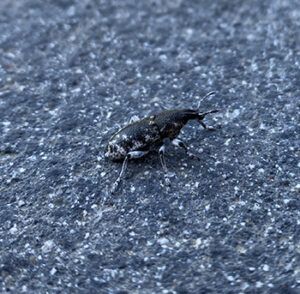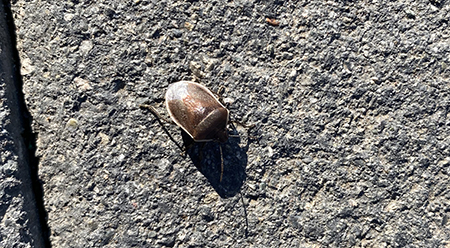BY HARRY WEEKES

I am struck by how often I find out that one of my wonderful ideas has already been discovered, thought about, ruminated on, and otherwise discussed elsewhere, and usually a long time ago. In fact, this has become so common that I no longer think I have any wonderful ideas, but rather am simply rediscovering what is already known.
And so it is with this idea of the wild and wilderness, and a thread which has run through this column from the time I started writing it — that the world outside of our door is just as magical and awesome and awe-inspiring as even those most majestic of landscapes we have set aside as “Official Wilderness.”
When I came across William Cronon’s “The Trouble with Wilderness,” written in 1995, I realized someone else had, once again, been thinking about this a lot longer and better than I had. One particular line from the essay that jumped out at me: “What I celebrate about such places is not just their wildness, though that certainly is among their most important qualities; what I celebrate even more is that they remind us of the wildness in our own backyards, of the nature that is all around us if only we have eyes to see it.” In short, the magic of the big places is that they remind us of the little places — if we let them.
In an effort to channel this kind of thinking, I set out to find “wild things” of any size and scale, with my goal and intent to find the first wild things I came across.
Enter the weevil and the stinkbug, both of whom were ambling across the same patch of pavers outside of my office, and both of whom I struggled to get good pictures of simply because they were so small.
In the few minutes I spent with each, I experienced my usual cascade of questions that spanned the gamut from purely practical (“How do I hold this creature?”) to biological (“This weevil is almost perfectly camouflaged to this paver — is that intentional?”) to philosophical (“Is there a scale below which all things are wild simply because human impact is so large as to vanish?”).
And, of course, these were all wrapped into the whole experience, which was overlain with amazement. These two were literally walking around. The stinkbug was full of energy, easy to pick up, and impossible to hold as it wanted to get away from me, which it eventually did by walking to the end of my finger and flying away. The weevil barely moved, only to right itself each time I failed to pick it up. Hard to hold and languid, this weevil was a marvel — its skin looked like a small rhinoceros, its antennae waved slowly about sensing me and the world around it, and it somehow wore a camouflage miraculously alike a surface that didn’t exist in its world two weeks ago.
Then, more questions. Where did they come from before I came? Where did they go when I left? What did each think of me? What do they think at all?
Needless to say, each of those questions could occupy someone for years (which they no doubt have, though I did not dive into the research on stinkbugs and weevils that undoubtedly exists out there).
Instead, I lay on the ground and held two insects, and spent a few moments contemplating another world, an important world. This is that small wild world that we all inhabit if we just take a little bit of time to recognize it.
Harry Weekes is the founder and head of school at The Sage School in Hailey. This is his 50th year in the Wood River Valley, where he lives with Hilary and one of their three baby adults—Simon. The other members of the flock, Georgia and Penelope, are currently fledging at Davidson College in North Carolina and Middlebury College in Vermont, respectively.



